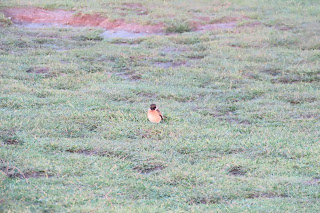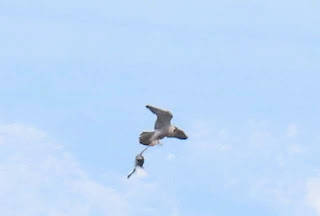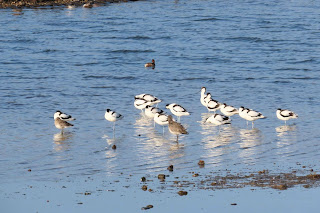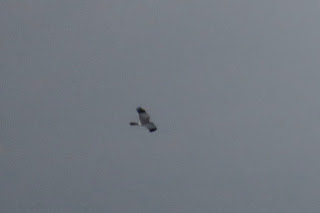What I especially like about patching, and I suspect this is true of most patch birders, is picking up on the subtle changes that might otherwise go unnoticed on a casual visit to a site. This is especially true of those patches which, like mine, don't exactly have an overwhelming number of birds.
This morning I visited Barton for the 4th time this week (excluding a couple of others whilst working) and there has clearly been a little bit - and really just a little bit - on the move. Just about noticeable has been a small increase in Robins, more so has been the greater number of Blackbirds, with all the newbies of the latter being males. I'm only talking an additional three or four, but definitely an increase, with another male Blackbird this morning heading quite high west that clearly wasn't a local bird. One gets to know where they'd normally be, and therefore tend to notice when they pop up elsewhere. There was also an extra male Stonechat today, in addition to the usual three pairs.
Another sign this morning of the year moving along was the first Skylark song of the year, both from birds in flight
and also taking the lazier option.
I check the roadside pools most visits, with the Little Grebe now recorded each time. Even when not seen, he has started regularly "singing", so is generally heard. As far as I can tell it is just the one, but last year breeding was successful on these pools, although I only saw one chick once, very soon after hatching, and then the whole family inexplicably disappeared.
Today he had unusual company (generally it's just a gang of 5 Moorhens and the occasional Mallard or two), in the form of a Cormorant. Another "so what?" bird for anyone not patching, but I've not seen one on these pools before.
It's a tiny pond and it's hard to imagine there are any fish in it, let alone anything worthy of the attentions of a Cormorant, but it spent a lot of time trying. Do they also feed on invertebrates?
Two Siskins heading northeast were a patch year tick (now on 80), and further evidence of a little migration maybe. Yet another one of those records that one only really appreciates as a patch birder. For any casual visitor they would just have been a couple of Siskins, but for me they were another little snippet to make the effort worthwhile.
Up at Hordle Cliff the now-regular Whimbrel was again in fields with Curlews and Oystercatchers, and with the sun out I slightly improved on previous photographic efforts, although it was still a little distant.





























































